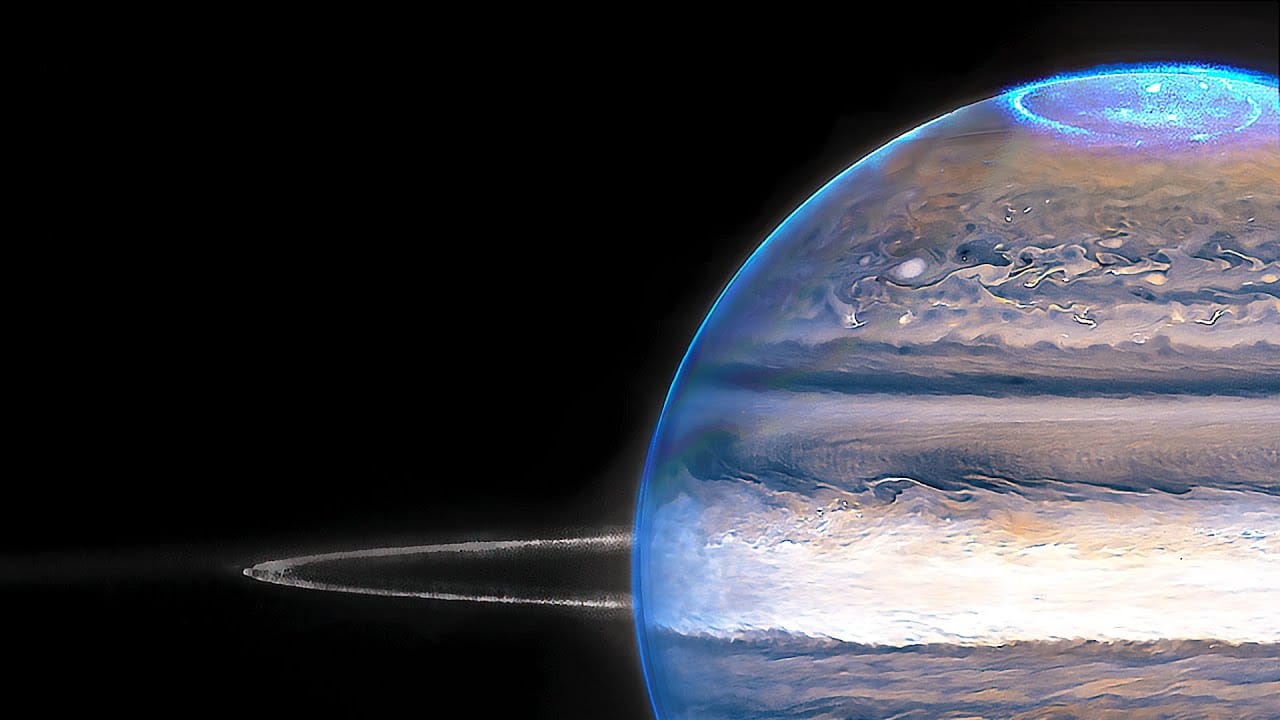In a groundbreaking achievement in astronomical observation, NASA’s James Webb Space Telescope (JWST) has captured stunning images of auroras on Jupiter, revealing the complexities of the gas giant’s atmospheric dynamics. The dazzling displays of light, comparable in brightness to those seen on Earth, provide new opportunities for scientists to understand the processes that create auroras and how they differ in various planetary environments.
Auroras, which occur when charged particles from the solar wind collide with a planet’s magnetic field and atmosphere, create beautiful light shows typically seen at higher latitudes on planets. While Earth’s auroras are well-documented, the auroras on Jupiter present a unique spectrum of behaviors, significantly influenced by the planet’s rapid rotation and immense magnetic field. The JWST, equipped with advanced infrared imaging capabilities, has identified the specific locations and structures of these auroras, allowing scientists to draw comparisons between Jupiter and Earth.
The observations were made possible thanks to the telescope’s powerful instruments, which can peer through the obscuring clouds of gas and dust that often surround planetary bodies. JWST’s ability to capture infrared light allows scientists to detect emissions from molecules in Jupiter’s upper atmosphere. The telescope provides detail that has previously eluded researchers, offering insights into the energy and composition of these auroras. The recent findings revealed that the largest of these auroras on Jupiter is located at the planet’s poles and extends far into its atmosphere, making them substantially broader than those found on Earth.
One significant distinction between auroras observed on Earth and those on Jupiter is related to the source of the charged particles. On Earth, solar wind plays a crucial role in creating auroras. In contrast, Jupiter’s intense magnetosphere, which is thousands of times more powerful than that of Earth, captures and accelerates charged particles from both the solar wind and from the planet’s own moons, especially Io. This interplay of sources results in a complex auroral display that responds dynamically to varying conditions in space.
In addition to revealing the mechanics behind these spectacular light shows, the JWST observations aid in enhancing our understanding of Jupiter’s atmospheric composition. The data highlights the presence of specific molecules related to the auroras and indicates how energy transfer processes unfold in Jupiter’s upper atmosphere. The interactions of solar particles with atmospheric gases can provide insights into the chemical makeup and behavior of different layers of the atmosphere, enriching our overall knowledge of planetary atmospheres.
Moreover, the significance of these findings extends beyond mere curiosity about Jupiter. Understanding the dynamics of auroras on other planets aids scientists in developing a more comprehensive understanding of celestial bodies, including how atmospheres interact with solar and interstellar phenomena. This comparative planetary science approach is essential for researchers who aim to understand not only the characteristics of other planets but also the evolution of their atmospheres over time.
As the JWST continues to observe various cosmic phenomena, its pioneering observations of Jupiter’s auroras are a testament to the potential of infrared astronomy. The telescope’s advanced technologies open up avenues for further exploration and discovery, motivating scientists to propose more targeted studies of gas giants and other celestial objects. The images captured by JWST are expected to lead to enhanced models of atmospheric processes across different planetary bodies, elucidating the complex interactions present in space.
The implications of this research also stretch towards future missions and exploration of other planets within our solar system. By granting scientists detailed knowledge about atmospheric phenomena, it lays the groundwork for future studies and potential explorations of the moons orbiting Jupiter, which are believed to harbor subsurface oceans and the potential for hosting life. Understanding the effects of magnetic fields and radiation on these environments is crucial for any future missions that seek to explore the potential for habitability in these distant worlds.
In conclusion, NASA’s James Webb Space Telescope has not only captured breathtaking auroras on Jupiter, but it has also broadened our knowledge of how these phenomena occur and interact with their planetary environments. The insights gleaned from these observations will undoubtedly enhance our understanding of planetary atmospheres, both in our solar system and beyond. As scientists continue to analyze the data provided by JWST, we are left with the tantalizing prospect of new discoveries that could redefine our understanding of the universe’s intricate dynamics. With each observation, NASA’s Webb Space Telescope underscores the importance of continuous exploration and the potential technology holds in unveiling the mysteries of space.
